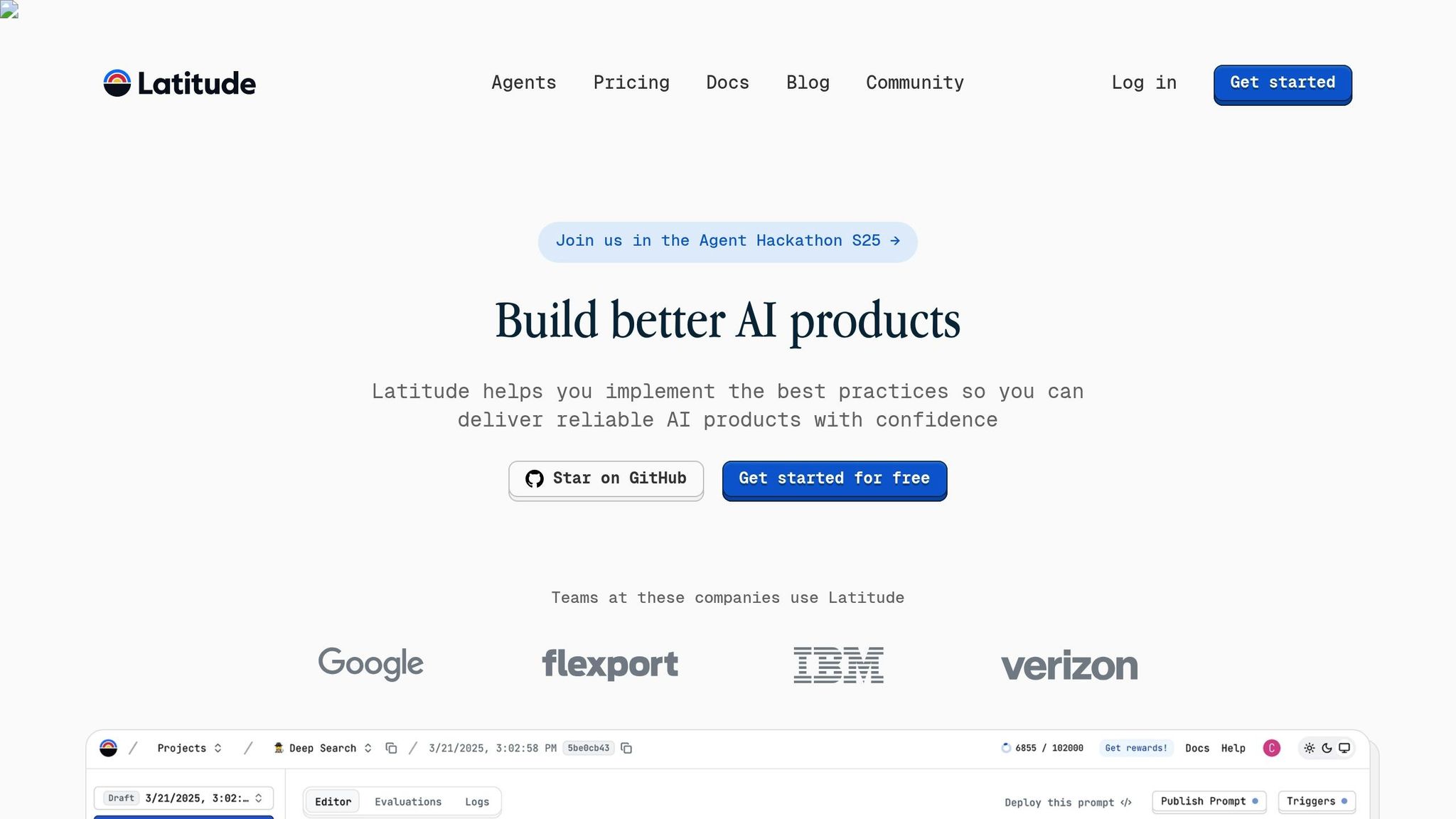Ultimate Guide to Domain Vocabulary for LLM Fine-Tuning
Enhance large language models with domain-specific vocabulary to improve accuracy and relevance in specialized fields.

Want your LLM to excel in a specific field? Start with domain vocabulary.
Domain vocabulary refers to the specialized terms and phrases unique to industries like medicine, finance, or tech. Incorporating this vocabulary when fine-tuning large language models (LLMs) improves accuracy, relevance, and consistency in responses.
Key Takeaways:
- Why It Matters: Models perform better with precise, industry-specific terms.
- How to Build It: Use sources like manuals, expert input, and academic papers.
- Integration Tips: Organize terms, create custom tokenizers, and train with realistic data.
- Measure Success: Track accuracy and context relevance before and after fine-tuning.
Fine-tuning with domain vocabulary ensures your LLM delivers accurate and context-aware outputs for specialized use cases.
Building Your Domain Vocabulary
Creating a strong domain vocabulary is essential for improving the performance of large language models (LLMs). A structured approach to vocabulary development can make all the difference.
Finding Key Terms
Developing a domain-specific vocabulary starts with focused research and expert contributions. Use a variety of tools and sources to gather terminology:
| Source Type | Method | Advantages |
|---|---|---|
| Industry Documentation | Analyzing manuals, reports | Captures widely accepted terms |
| Subject Matter Experts | Interviews, workshops | Adds context and practical usage |
| Academic Literature | Reviewing papers, journals | Ensures scholarly accuracy |
| Regulatory Documents | Examining compliance guides | Ensures legal and regulatory clarity |
Pay close attention to terms that are common in your field but may carry unique meanings. For example, in medicine, "positive" or "negative" can indicate specific diagnostic results rather than general connotations.
Organizing Terms
Once you've identified key terms, organize them based on their relationships, usage, and relevance. Here’s a simple way to structure your vocabulary:
- Define the technical meaning of each term.
- Specify the contexts in which the term is used.
- Include synonyms or related terms for clarity.
- Note how often the term is used and its importance in communication.
Using tools like Latitude, teams can maintain version control and ensure everyone accesses the latest vocabulary sets. This approach helps standardize communication and ensures consistency across projects.
Creating Custom Tokenizers
Custom tokenizers are critical for ensuring that specialized terms are processed correctly by LLMs. These tools group domain-specific words into cohesive units, preserving their meaning during processing. While creating custom tokenizers can be a complex task, Latitude simplifies it with integrated tools for implementation and testing. This allows teams to fine-tune tokenizers to capture the subtle nuances of their domain language effectively.
Adding Domain Terms to LLM Training
Integrating specialized vocabulary into large language model (LLM) training requires a structured approach. Here's how to effectively bring domain-specific terms into the mix.
Expanding LLM Vocabulary
To expand an LLM's vocabulary, new domain terms must be accurately represented. Tools like Latitude's vocabulary management system can help integrate these terms while preserving the model's performance.
| Integration Stage | Key Actions | Expected Outcomes |
|---|---|---|
| Term Analysis | Examine frequency and context patterns | Pinpoint impactful terms |
| Embedding Setup | Create word vectors and check semantic accuracy | Represent terms effectively |
| Integration Testing | Test token recognition and measure perplexity | Confirm successful integration |
Once new terms are added, the next step is building a training dataset that incorporates these terms.
Building Training Data
The training data should reflect how the terms are used in real-world scenarios. Include domain-specific terms across various contexts to ensure the model learns their proper usage:
- Technical Documentation: Provide definitions and examples of how terms are used.
- Conversational Examples: Show how terms appear in practical discussions.
- Edge Cases: Include rare but valid applications of the terms.
Balanced representation is crucial. Domain experts can review and validate the training data using Latitude's collaborative features, ensuring accuracy and relevance.
Writing Domain-Specific Prompts
Crafting precise prompts is key to leveraging the added terms effectively. Focus on setting clear contexts, integrating terms naturally, and testing prompt complexity to validate performance.
Here’s how to approach it:
- Context Setting: Provide relevant background to frame technical terms.
- Term Integration: Seamlessly include domain-specific vocabulary in task descriptions.
- Performance Testing: Test the prompts across a variety of use cases to ensure accuracy.
Use analytics to track how well the prompts perform, refining them as needed to improve the model's understanding and use of the domain vocabulary.
Measuring Results
After integrating domain-specific vocabulary, it's crucial to evaluate its impact on performance. This section outlines key metrics to assess improvements and guide further refinements in vocabulary integration tools.
Performance Metrics
To evaluate how domain-specific vocabulary affects large language model (LLM) performance, focus on these metrics:
| Metric Category | Key Measurements | Purpose |
|---|---|---|
| Accuracy Metrics | Accuracy, Precision, Recall, F1-score | Assess overall performance |
| Domain-Specific Metrics | Term frequency, Context accuracy | Analyze vocabulary effectiveness |
Latitude's analytics dashboard allows teams to monitor these metrics in real time, helping identify areas that need adjustments. The platform's evaluation tools ensure consistent tracking across different model versions.
Before and After Analysis
Comparing performance before and after fine-tuning highlights the impact of domain vocabulary integration. Start by running identical tests on both pre- and post-fine-tuning versions. Use the same datasets, evaluation prompts, and metrics to maintain consistency.
Document improvements in technical accuracy and context relevance to measure the effect of the vocabulary integration.
Consistency is key - keep testing conditions uniform and record any variables that could affect outcomes. Latitude's version control system makes it easier to track changes between model iterations, ensuring reliable comparisons.
When reviewing results, focus on:
- How effectively the model uses domain-specific vocabulary.
- Whether responses show better understanding of technical concepts.
- Performance in complex scenarios requiring in-depth domain knowledge.
These insights help refine training processes and improve vocabulary management for future iterations.
Tools and Tips
Fine-tuning domain vocabulary requires a structured approach and strong team collaboration. Below, you'll find practical methods to streamline your vocabulary integration process.
Testing and Improvement Cycle
Testing plays a critical role in ensuring domain vocabulary works as intended. Here's a breakdown of the key phases:
| Phase | Activities | Outcomes |
|---|---|---|
| Initial Testing | Check vocabulary coverage and validate context | Better recognition of terms |
| Refinement | Focus on key terms and adjust usage in context | More accurate responses |
| Integration | Deploy vocabulary and track performance | Consistent use of terms |
Steps to follow:
- Baseline Assessment: Set a starting point by measuring current performance.
- Iterative Testing: Make small, incremental vocabulary adjustments.
- Performance Review: Regularly track accuracy and quality of responses.
- Vocabulary Refinement: Use testing feedback to tweak your term set.
This process works best when your team is on the same page, as explained below.
Using Latitude for Team Projects

Latitude simplifies team collaboration by offering a centralized platform for managing vocabulary. Teams can review, update, and validate domain-specific terms all in one place, making the process more efficient.
Team roles include:
- Domain Experts: Ensure terminology is accurate and relevant.
- Engineers: Handle implementation and testing of vocabulary.
- Project Managers: Oversee coordination and ensure smooth workflows.
Conclusion
Integrating domain-specific vocabulary is a key factor in building high-performing LLMs that can function accurately within specialized fields. By focusing on carefully selected vocabulary, structured implementation, and thorough testing, organizations can improve their models' understanding and output.
Key Takeaways
Domain vocabulary integration relies on three main components:
Organized Process
- Develop carefully chosen, industry-specific vocabulary sets.
- Use structured, validated approaches and update vocabulary sets regularly.
- Implement clear testing protocols to ensure performance.
Team Collaboration
- Foster cooperation between domain experts and technical teams.
- Utilize centralized tools for seamless collaboration.
- Define clear responsibilities for maintaining and updating vocabulary.
Performance-Driven Goals
- Focus on measurable improvements in model accuracy.
- Conduct continuous testing and refinement cycles.
- Make updates based on data and performance insights.
Together, these elements ensure domain-specific LLMs can meet the unique needs of specialized industries.
Investing in domain-specific vocabulary is a smart move for LLM development. Collaborative tools like Latitude simplify this process, enabling teams to build consistent and accurate models. Regular refinement is essential to keep models effective and relevant.
FAQs
How do I make sure my domain-specific vocabulary is accurate and up-to-date for fine-tuning large language models?
To keep your domain-specific vocabulary accurate and up-to-date for fine-tuning large language models, focus on building a comprehensive and well-maintained dataset. Collaborate with domain experts to identify key terms, phrases, and nuances relevant to your field.
An open-source platform like Latitude can simplify this process by enabling teams to refine prompts, test them with real data, and deploy updates efficiently. It also supports creating and managing high-quality labeled datasets, ensuring your vocabulary remains relevant and effective for fine-tuning.
What are the best practices for designing custom tokenizers to handle specialized vocabulary in specific domains?
Creating a custom tokenizer for domain-specific terms can greatly enhance the performance of fine-tuned large language models. Here are a few best practices to follow:
- Identify key terms: Start by compiling a list of specialized terms, abbreviations, or phrases commonly used in your domain. These should be terms that the base tokenizer might not handle effectively.
- Customize tokenization rules: Adjust the tokenizer to treat domain-specific terms as single tokens. This helps the model better understand their meaning and context.
- Test and refine: Evaluate your tokenizer's performance by running sample texts through it. Make iterative improvements to ensure it handles edge cases and reduces token fragmentation.
By tailoring your tokenizer to your domain, you can significantly improve the accuracy and efficiency of your fine-tuned language model.
How can I evaluate the impact of using domain-specific vocabulary on my LLM's performance?
To evaluate the impact of integrating domain-specific vocabulary into your LLM, you can leverage tools designed for prompt engineering and performance measurement. Platforms like Latitude provide features to assess your model's outputs through methods such as LLM-as-judge evaluations, human-in-the-loop reviews, or comparisons against a defined ground truth.
You can also create datasets, including those derived from production logs, to test prompts or run batch evaluations. These approaches help ensure your fine-tuned model aligns with your domain's specific requirements and delivers optimal results.
